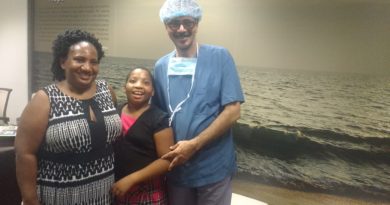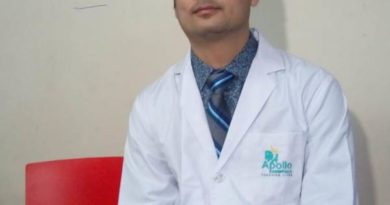Global Hospitals Organize Awareness Sessions On Urogynec And Heart Condition
More than 150 women participated in the awareness session organized by Global Hospital, Mumbai on Urogynecological problem and heart conditions that often goes unseen.
Cardiovascular disease is one of the leading causes of death for women. While men and women both experience chest pain as a primary heart attack symptom, women often have vague symptoms without usual chest pain, like palpitation, pain in the back, shoulder, sweating or indigestion. Women who undergo early menopause either due to surgical removal of their ovaries or due to premature ovarian failure have the same rates of cardiovascular disease as age-matched with men’s.
In fact, rates of heart disease among younger women (aged 35 to 54) are actually increasing, a trend thought to be attributable to obesity. Womenworks round the clock to ensure good health, happiness, and prosperity of the family; will definitely affect stress and lifestyle.
Dr Pravin Kulkarni Cardiologist, Global Hospital Parel, Mumbai said, “Women are often not referred for appropriate diagnostic and/or therapeutic procedures. Commonly performed treadmill stress test shows a high proportion of results as “false positive”. This means the test result suggests the presence of blockage in the absence of one. More advanced testing in the form of stress nuclear or echocardiography imaging, CT coronary angiography or conventional angiography is warranted in the setting of suggestive symptoms. Lesser number of women undergo the life-saving emergency coronary angioplasty in an acute major heart attack. Women have higher mortality (death) and morbidity (disability) rates from heart disease, are more likely to have a second heart attack than men.”
Women tend to have higher rates of complications including death associated with heart attacks. Irrespective of the gender, any major cardiovascular disease warrants prompt diagnosis and treatment. Identification and treatment of all major risk factors, maintaining a high index of suspicion for heart disease, early referral to the equipped center for management of heart disease remains the cornerstone to reduce this endemic of cardiovascular disease in women. The need for a balanced diet with high nutritional value, minimal intake of unhealthy trans fats, restriction of excess carbohydrates and fats cannot be overemphasized. Physical inactivity is a bane of the modern world. Good aerobic activity like walking, jogging, swimming, etc done for 30-45 mins daily will help in a big way to keep heart disease at bay.
“Heart disease affects both men and women, with far worse outcome in the latter. The need of the hour is to identify this endemic, create awareness in the society and initiate aggressive preventive measures as highlighted, ” Concluded Dr. Kulkarni
Dr Aparna Hegde, Urogynecologist, Global Hospital Parel, Mumbai said, “On mother’s day, it is important to pledge that we will give utmost importance to our own bodies and the damage it can undergo in childbirth. There is no better way to honour a mother than by realizing that the quality of her life matters. 1 in 3 women who has delivered can suffer from Urogynecological problems like prolapse and bowel and bladder control problems , resulting from changes to the pelvic muscles and soft tissues caused by childbirth. None of these conditions are a normal part of aging. But women continue to suffer in silence. It is important to remember that treatments are available, including many highly effective non-surgical treatments like biofeedback and pelvic floor muscle strengthening.”




